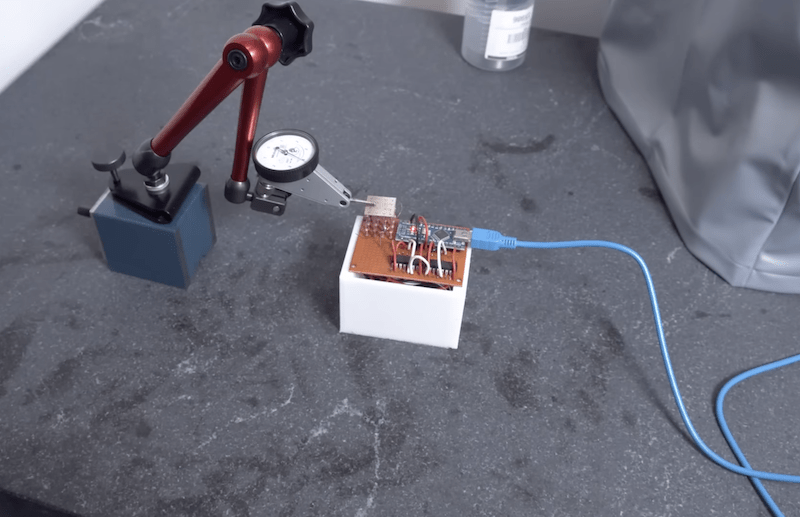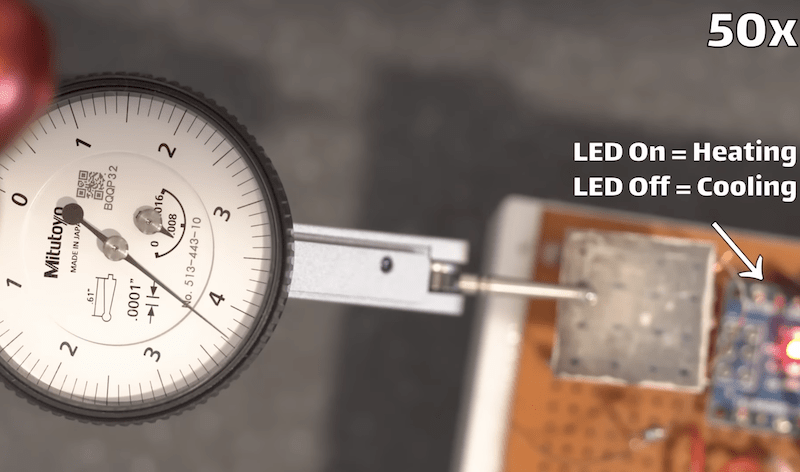A DIY thermally actuated deformable mirror

In typical applications, the optimal mirror is as flat as possible. The flatter the mirror, the less optical distortion it imparts onto the reflected “image.” Distortion isn’t often desirable, so precision mirror manufacturers take great pains to manufacture ultra-flat mirrors. But distortion is sometimes a good thing, such as when you want to focus reflected light. In some cases, one might even want to adjust mirror distortion. To experiment with that idea, YouTuber Breaking Taps built a thermally actuated deformable mirror controlled by an Arduino.
Breaking Taps has something of an obsession with microscopes and, in turn, optics. That led him to the research that inspired this project. That research described a mirror that deforms based on thermal actuation, as opposed to some kind of MEMS (micro-electromechanical system) actuation. The use case for such a deformable mirror is in astronomy. A precisely controlled deformable mirror lets a telescope compensate for atmospheric optical distortions. Those distortions can change based on atmospheric conditions, which is why on-demand deformation has a use.

This mirror’s actuation relies on thermal expansion, which is the tendency of a material to expand or contract depending on temperature. A semi-flexible mirror sits on a 4×4 array of 16 THT (through-hole technology) resistors. When current flows through the resistors, they heat up and expand. They only expand on a micron scale, but that is enough to impart the small amount of distortion that a mirror like this requires. An Arduino controls the flow of current through each resistor in the array, so each of the 16 attachment points can move up or down on demand.
While this does work, Breaking Taps is quick to point out that it isn’t very practical. Thermal expansion is slow, which reduces the practicality of this actuation method. Furthermore, the mirror used in this project had poor optical properties. But the idea is still interesting and we imagine that this kind of thermal actuation has other applications.